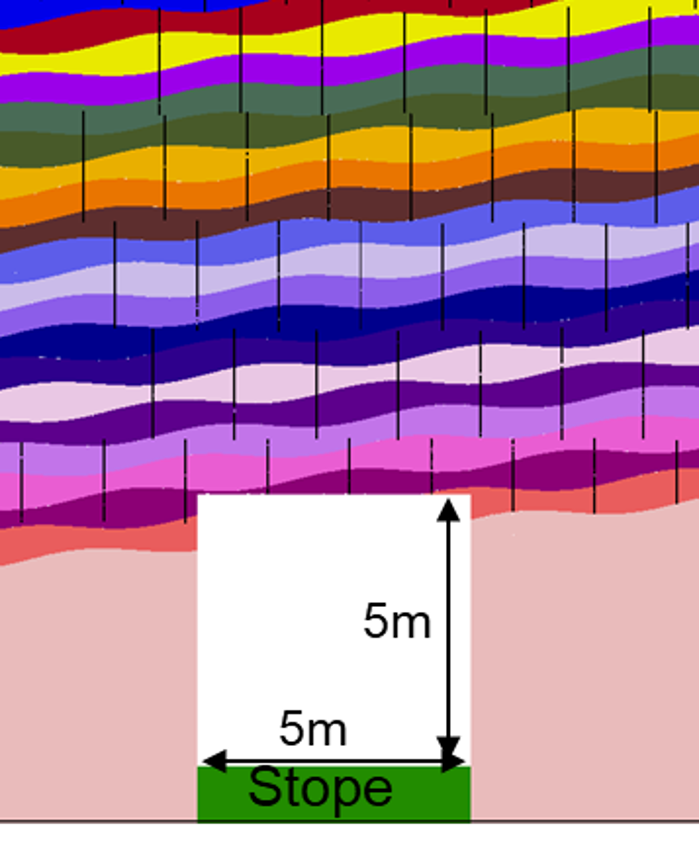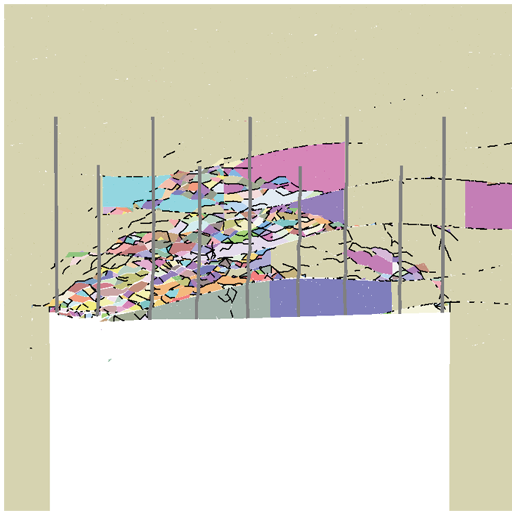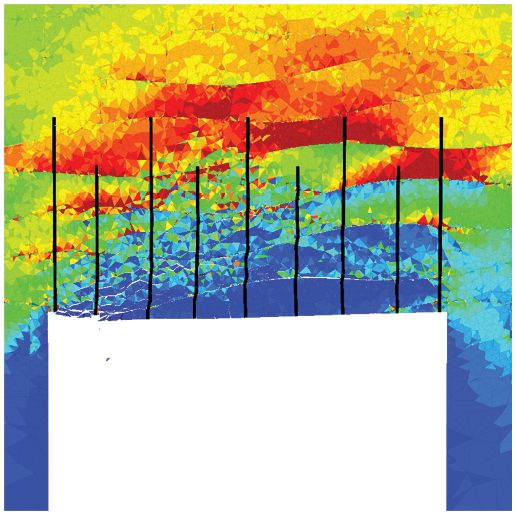The Bonded Block Model (BBM) in 3DEC can be used to simulate intact or veined rock or a rock mass as bonded polyhedral elements (e.g., tetrahedrals). These bonded polyhedral blocks can break apart along their subcontacts (bonds) as a result of stress concentrations, simulating the initiation of cracks that can coalesce and/or propagate to fracture the rock mass. This results in an emergent damage pattern with associated bulking. These processes tend to dominate the rock mass behaviour in low confinement zones near excavations. Joints may also be explicitly represented by overprinting them as cuts across the intersecting blocks.
The 3DEC approach differs from particle-based methods such as PFC in its inherent ability to represent a zero initial porosity condition, as well as interlocked irregular block-shapes that provides resistance to block rotation (moments) after contact breakage. This approach matches the high uniaxial compressive strength (UCS) to tensile strength ratios and friction angles typically exhibited by hard rock. The strength of the contacts between the tetrahedral blocks forming the BBM are directly informed by randomly sampling a cumulative tensile strength distribution derived from a point load test campaign. The cumulative strength distribution is used to account for strength heterogeneity. The cohesion of the contacts is set to be a multiple of the assigned tensile strength such that the ratios produced a macro UCS to tensile strength ratio is of the order of 10–20. The blocks themselves are treated as an elastic medium.
Tools are available in 3DEC to aid in model generation, optimize computational performance, and analyse results, such as tracking and plotting (i.e., fragmentation).
Advantages over other discontinuum approaches:
- Ability to represent a zero initial porosity condition
- Interlocked irregular block shapes that provides resistance to block rotation (moments) after contact breakage
- High uniaxial compressive strength to tensile strength ratios and friction angles
Advantages over continuum approaches:
- Exhibits spalling behavior
- Unidirectional bulking possible upon breakage
- Cracks can initiate, propagate and/or coalesce resulting in associated fragmentation
The following is an example of BBM modeling where a 3DEC model of a 5 m wide mine drift 440 m deep. The simulations predict the response of the tunnel and a particular ground support regime (#7 rebar) after a nearby stope has been excavated (Garza-Cruz et al., 2019).



